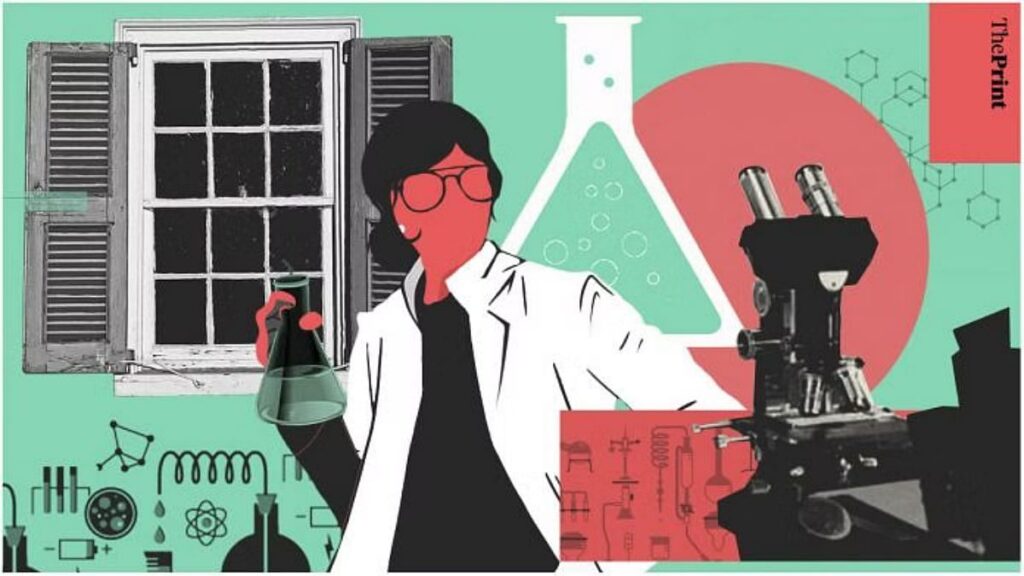New Delhi: A fascination with science during her childhood ignited Snahlata Singh’s enduring enthusiasm for research and innovation. As a cancer researcher and co-founder of BioMarkIQ, a biotechnology firm based in Pune, she is dedicated to enhancing healthcare, particularly through the creation of advanced tools for the early detection of lung cancer.
“From a young age, my passion for science has been unwavering. The thrill of formulating new questions is what keeps me motivated. Science offers a dynamic career that is always evolving,” Singh shared with ThePrint, emphasizing the relentless intellectual challenges that sustain her commitment to her work.
In 2015, the United Nations General Assembly proclaimed February 11th as the International Day of Women and Girls in Science, aimed at promoting gender equity in science, technology, engineering, and mathematics (STEM) fields. This year signifies the 10th anniversary of this observance, focusing on the theme “Unpacking STEM Careers: Her Voice in Science.”
ThePrint engaged with multiple women scientists to explore their journeys and the challenges they encounter in STEM.
Navigating Health-Tech Innovation Challenges
Reflecting on her path to establishing BioMarkIQ, Singh noted the difficulties inherent in creating health-tech products. “The development timeline in the health-tech sector can be extensive due to the necessity of clinical trials and regulatory approvals, both of which require significant time and resources,” she stated.
Acknowledging the unique challenges faced as a woman entrepreneur, she added, “Every step is met with scrutiny. We are often expected to juggle multiple responsibilities.”
For aspiring young girls in STEM, her counsel is rooted in the values of patience and perseverance: “Scientific careers are gradual, so remain steadfast in your ambitions and priorities,” she advised, encouraging them to stay focused on their objectives despite obstacles.
Overcoming Barriers in STEM
Pooja Agrawal, currently the program director of biomedical research and innovation for Blockchain for Impact (BFI), reminisces about her early experiences in STEM, where during her B. Tech program in the 1990s, she was one of just four girls in a predominantly male class. Over time, Dr. Agrawal has amassed a wealth of experience in aging, stem cell biology, genomics, and cancer research.
“Conducting research is inherently demanding, and being a woman adds to the complexity,” she shared with ThePrint, reflecting on the hurdles she faced during her doctoral studies at Brown University.
In India, while women represent over 43% of STEM graduates, the percentage in STEM occupations plummets to only 14%. Agrawal pointed out that “we are losing women as they advance in their careers. Both conscious and subconscious biases exist, and many women depart the field due to personal and societal pressures as they progress.”
She expressed gratitude for the support from her family, which allowed her to pursue her career overseas, underscoring the necessity of a solid support network for women in academia. “Women possess tremendous strength; we just need to harness it even more to excel in STEM,” she said.
Pioneering Healthcare Innovations
Divyakshi Kaushik, founder and CEO of Pune-based wearable healthcare technology startup Anatomech, shared her thoughts on the barriers women-led startups encounter in securing funding. “Investors often find it challenging to trust women entrepreneurs, especially regarding their execution capabilities and credibility in healthcare startups that require lengthy development timelines,” she remarked.
A recipient of the esteemed BIRAC Social Innovation Immersion Fellowship and the NIDHI PRAYAS Grant from the Government of India, Kaushik noted that the NIDHI PRAYAS initiative, under the Department of Science and Technology, supports innovators with funding up to Rs 10 lakh, intended to assist in converting ideas into tangible prototypes.
Highlighting the gender disparity across various sectors, she remarked, “While we observe many women eager to participate in healthcare, the same cannot be said for other industries.”


